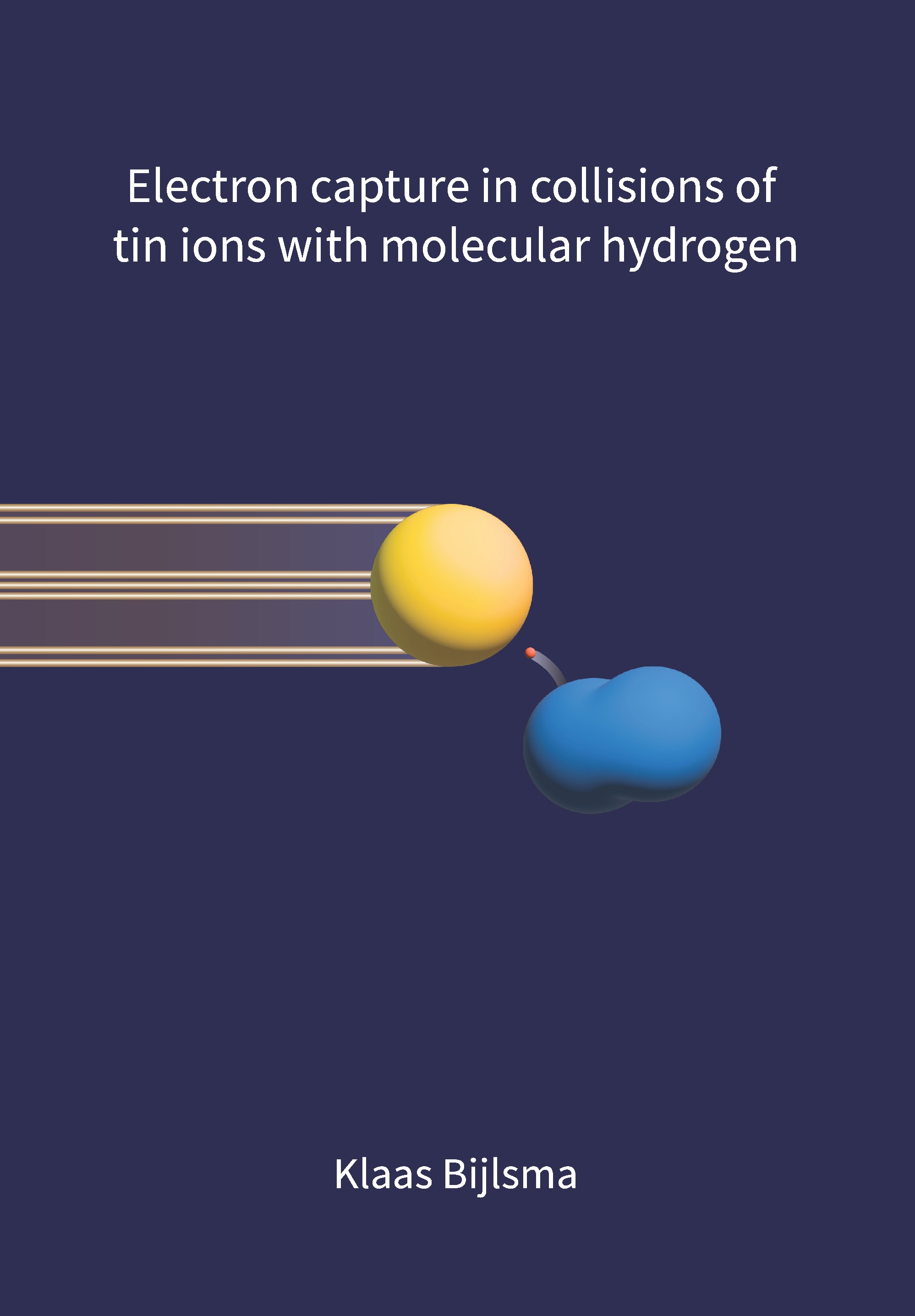Electron capture in collisions of tin ions with molecular hydrogen
Electron capture is a fundamental process in which a positively charged projectile particle moves past a neutral target particle and where it takes one or more electrons from the target particle. The process plays a role in the light source of advanced lithography machines which use extreme ultraviolet (EUV) light. This light is generated by a hot plasma of tin (Sn). Hydrogen gas (H2) is used to slow down fast Sn ions from the plasma to prevent them from possibly causing damage. Besides energy transfer, electron capture occurs in the collisions. The theme of this thesis is electron capture by tin ions from molecular hydrogen.
The ZERNIKELEIF facility is used to make a beam of energetic Sn ions which subsequently crosses a beam of H2 gas in a custom-made experimental setup. The probability of electron capture by doubly and triply charged Sn ions has been determined for the first time, even over a wide energy range. Based on a simple reaction energy balance one expects the conversion of higher to lower charged Sn ions by electron capture from H2 to stop at Sn2+. However, we have found two reaction pathways that efficiently produce Sn+ ions.
We compared our experimental results to combined classical and quantum mechanical calculations by the expert group at the Universidad Autónoma de Madrid. We find good agreement at the higher energies, while at the lower energies the values deviate. We believe this is due to the neglect of the molecular vibrations in the calculations.









